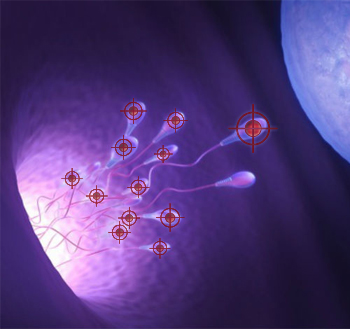
Vic,
Speaking of improving the universe it would appear that having womenʼs hip bones be a bit wider, or having them open up more completely and more flexibly during birth, would avert a lot of pain, and lower mortality rates for both newborns and mothers during childbirth. There was a pictorial and article about the evolution of upright hominids in National Geographic, “The Downside of Upright”, that explained the increased dangers during childbirth since humans have evolved an upright stance simultaneously with a larger cranium. The circle of bone through which the newborn must pass has narrowed as a result of the evolution of the hips for bi-pedalism.
Iʼve mentioned before that I donʼt think much of philosophy concerning the big questions. We could go round and round over the fact that thereʼs pain and death a plenty on this planet with the young of most species dying soon after fertilization (something like 50% of conceived eggs simply die, even in human beings); or they die during birth (see article); or they die during infancy or early childhood from a wide possible range of viruses, bacteria or even larger parasitic species or even members of the same species or larger predators who feast on the young (in fact a large percentage of the young of ALL species are devoured by such diseases); or they die of starvation or dehydration or natural disasters; or, most importantly, they die before they reach the age at which they are sexually mature and can pass along their genes to the next generation. Even if they survive all that, if they are male, they may get shunned by females of their species who prefer a different male, or they may engage in competitions of various sorts in which one male “wins” and gets to mate with the female while the other may perish or more likely slink off and not get to pass along their genes. So thereʼs a series of “hurdles” each living things passes through before it can get to leave its genes behind.
One could argue that “God” simply invented things that way, all the pain and suffering as added bonuses. All the “designs to defeat designs.” Or maybe “God” employed Darwinian evolution and things grew that way. Or maybe “God” isnʼt exactly the “Christian” or “Greek philosophical” ideal? I dunno.
I do think however that some folks are going to say, “God knows why he did it, so how can we know all the consequences like He has them all figured out? So end of conversation about ‘possible improvements.’”
While others are going to chime in with Voltaire who wrote, “The silly fanatic repeats to me… that it is not for us to judge what is reasonable and just in the great Being, that His reason is not like our reason, that His justice is not like our justice. Eh! how, you mad demoniac, do you want me to judge justice and reason otherwise than by the notions I have of them? Do you want me to walk otherwise than with my feet, and to speak otherwise than with my mouth?”
Some of my own questions concerning how the cosmos works and the inconceivably vast amount of apparent wastefulness itʼs machinations involve can be found in my tongue-in-cheek piece, “Why We Believe In A Designer”, and also see this part of my reply to Dembski:
[The “Intelligent Designer” as the I.D.ists portray him to be] doesnʼt sound like a highly impressive “micro manager,” I mean, “perfecting” so many species only for them to become extinct over and over again.
Hereʼs a question I have, based on three examples from nature:
- The Bedbug — The male bedbug has a penis that penetrates the females abdomen in a traumatic act, but hereʼs the point I want to raise, only a single species of bedbug is known to have evolved to the point that males of that species penetrate the abdomens of Other Males while the first male is inseminating a female.
- The Bombadier Beetle — Only one species of “bombadier” beetle has a moving turret to direct its spray, the rest can only spray in one direction, usually covering their own backs, and other species of beetles have similar overall anatomies and have chambers and produce similar chemicals but without spraying anything.
- Homo Sapiens Sapiens — There is only one surviving species of human being but multiple known species of primitive primate and hominid species, all extinct. Based on such examples, my question is why does specialization in the cases I have cited always leave behind Many less highly “specialized” species when compared with the far Fewer number of relatively more highly specialized species? If a Designer is micromanaging the process, then why leave the majority of creatures “behind” as it were? Isnʼt that more a prediction of evolution than “design?” To put it another way: Why should a Designer require over two billion years simply to move from the earliest known Single-celled creature to the first Multi-cellular species? Why does a Designer require millions of years to produce human beings from their nearest cousins and also have to leave behind so many extinct primate species and then extinct hominid species in the process?


No comments:
Post a Comment